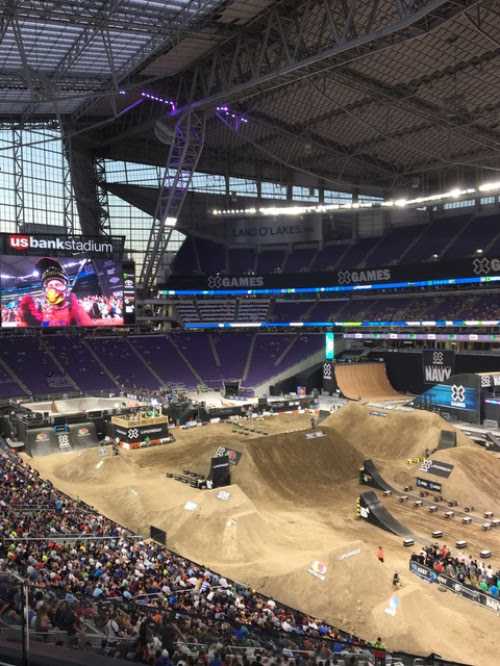DiGiCo SD11 on stream for X Games Minneapolis
- Details

Capturing a 360-degree view of flying skateboards and BMX bikes is no easy task, and keeping the audio on top of them is even more of a challenge. VR producers Digital Domain and Samsung relied on a DiGiCo SD11 console.
Rented from Windy Shores Sound, the SD11 was onboard a B-unit trailer of remote-production services provider Dome Vision, where VR A1 Nick Tveitbakk manned the console, taking individual microphone feeds and a stereo program feed from the Calrec Artemis console in the main remote unit, where it was mixed for the six VR cameras ESPN deployed at the Skateboard Vert, BMX Street and Skateboard Street Amateurs venues in downtown Minneapolis.
Viewers in 48 countries using the Samsung Gear VR headset through the Samsung VR app were able to follow the action live as though they were in the middle of it.
“This was the first time this has ever been done at an X Games, and the SD11 helped make what was a complex and challenging audio mix manageable,” explains Tveitbakk.
He cites the SD11’s Set Spill Panel, an easy to use interface that allows channels or inputs to be quickly added or removed from each of any multiple user-defined sets or groups, which are a user-defined collection of channels that can contain any number and type of input or output channels. This feature enabled him to group several shotgun and contact effects microphones together on a single fader, facilitating the rapid switching necessary as the VR point of view changed. “We were able to keep the audio completely connected with the VR picture, which really created an amazing VR experience.”
Connectivity between the SD11 and the Calrec Artemis aboard the Dome Vision main production unit was straightforward and reliable: a single MADI cable carried all the audio from the Calrec to the SD11, and from the SD11 to ESPN’s onsite production truck for the live streaming. “It was flawless,” says Tveitbakk.
(Jim Evans)
















